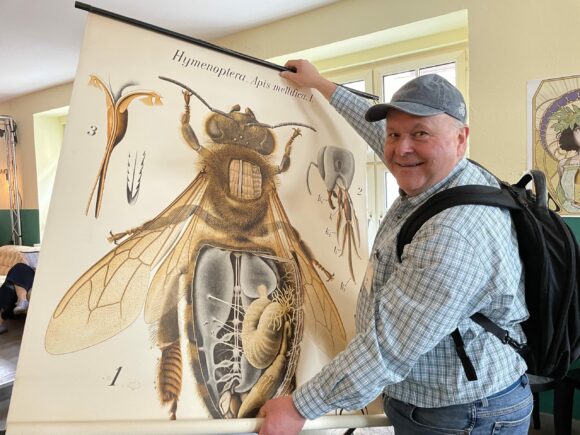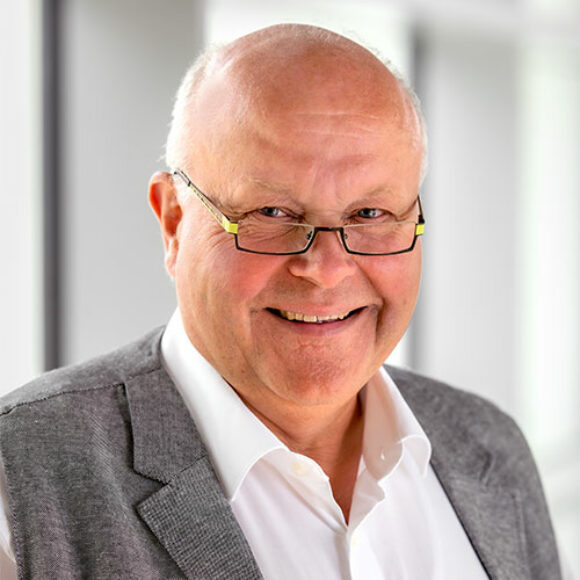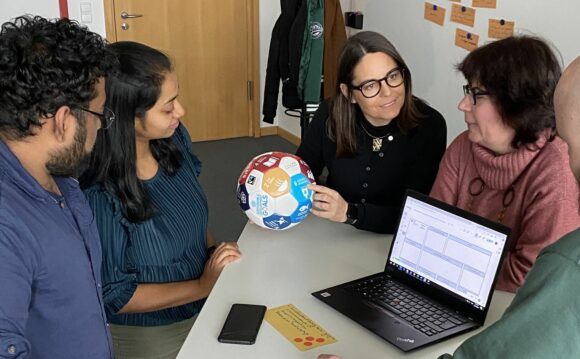Hof University of Applied Sciences would like to become independent of external energy in the future. To achieve this goal, the project “Energy self-sufficient Hof University” has now been launched. By the end of the year, Oliver Stark and his team at the iwe want to gain the necessary insights to achieve the big goal.
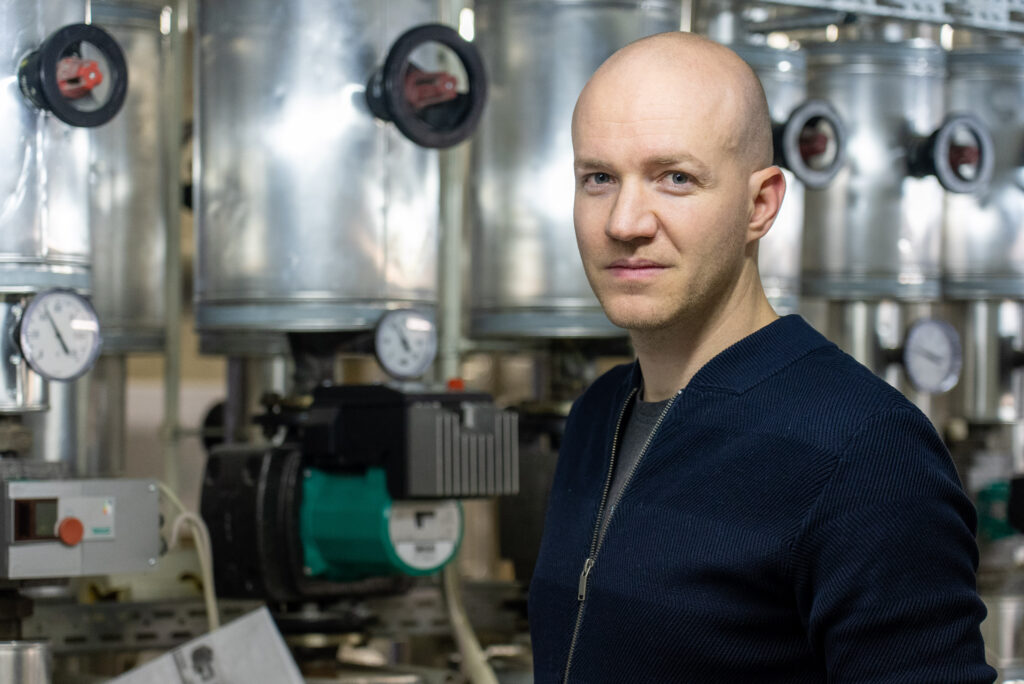
Mr. Stark, what were the motivations that led to the start of the project?
“In 2022, as a result of the energy crisis, a working group was formed at Hof University of Applied Sciences consisting of building services, the Infrastructure/Environmental Management staff unit and employees from iwe. In a workshop on energy efficiency, short-term energy saving possibilities were elicited. However, medium- and long-term measures on ways to become an energy self-sufficient university were also discussed.
Another reason is the legal requirements: According to the Bavarian Climate Protection Act (BayKlimaG), the state or authorities and institutions of the Free State of Bavaria are to act as role models in climate protection and must develop ideas and concepts. In particular, actions are to be taken in the areas of energy saving, the efficient provision, conversion, use and storage of energy as well as the use of renewable energies and their procurement in order to achieve the goal of a climate-neutral administration by 2028. However, the Bavarian State Ministry for the Environment and Consumer Protection has not yet commented on whether, in the view of the state government, the colleges and universities of the Free State should also be indirectly or directly assigned to the state administration.”
What exactly is the objective of their project?
“The project itself was initiated by Prof. Plessing. It aims to proactively develop scenarios for an energy self-sufficient university. Specifically, this means:
We want to develop implementation proposals in the areas of energy generation and energy storage for the heat and electricity sectors. Once completed, these concepts will then be published.
Oliver Stark, Project Manager
Possibly, other universities will also be able to benefit from this work – for example, in the form of energy consulting.”
What specifically is your task in the coming months?
“In order to be able to develop scenarios and concepts for an energy self-sufficient university, it is first necessary to conduct an in-depth inventory, i.e. an ACTUAL analysis of the existing systems. This includes data collection (property plans, building plans, pipe plans, wastewater pipes, etc.) for both main sites in Hof and Münchberg. After an initial review, data preparation of hydraulic plans is necessary in order to implement hydraulic balancing. But data preparation is also necessary for electrical circuit diagrams.”

Have there already been first steps here?
“Yes. At the end of last year, new measuring points were installed and set up at the Hof campus. Here, the evaluation of the measurement series of the new heat meters/electricity meters and the calculation of the heat consumption of individual parts of the building are pending. Under certain circumstances, the institute’s own measuring devices for both sectors could be used here to look at interesting areas in more detail. To conclude the inventory, the next step is to create the energy flow diagrams and evaluate the energy data to balance the total energy consumption.”
How should one imagine the current status? How energy self-sufficient is Hof University at present?
“With the installation of the measurement technology by the Infrastructure/Environmental Management staff unit, a suitable initial energy situation has been created at the Hof and Münchberg sites in order to be able to tackle concrete measures on the subject of an energy self-sufficient university.
For the Hof site, this means:
- At the present time, the university has three PV systems on the machine hall, on the G-building and on the D-building, each with a system in the low double-digit kWp power range. The reason for the construction of such systems is that when new buildings are constructed, the state building authority provides a certain percentage of the costs of the technical building equipment for the construction of a photovoltaic system through an administrative regulation.
- The Hof campus is completely supplied with energy by the civil service college. There, the university is supplied with heat via a local heating connection with a combined heat and power plant and two additional combi-burners. Electricity is also procured directly by HöfD.
At the Münchberg site, it looks like this:
- The campus is supplied regeneratively via a pellet boiler and is supported by a gas boiler at peak times. A PV system with an output of approx.10kWp was installed on the newly built technical center.
- In recent years, all heating sub-distributors in the individual parts of the building have been successively replaced. Currently, the construction measures of the heating pipe systems of the dyehouse and the building construction are pending.
The following applies at the Selb site:
- Since the site’s rooms are rented, it is difficult to implement energy-saving measures there.
- Currently, iwe employees are investigating a potential local heating concept to supply heat to the Rosenthal site using waste heat from a neighboring textile factory.
The situation at the Kronach site:
- Here, the site’s premises are also rented and energy measures are correspondingly difficult to implement there.”
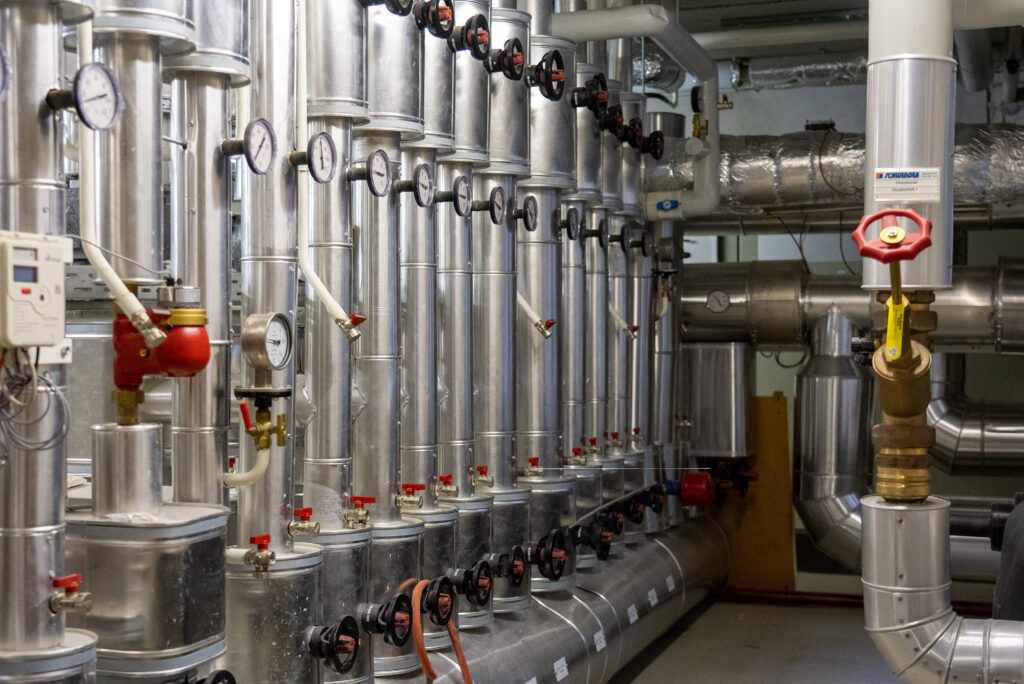
What particular challenges are already apparent today?
“It must now be sounded out whether suitable national or regional funding opportunities come into question for such energy installations, which make such implementation projects feasible on a larger scale.
There are also points to be clarified from a technological point of view. Normally, the State Building Authority in Bayreuth is responsible for construction activities at the sites. For example, the grid connection point or the medium-voltage switchgear would have to be retrofitted by the State Construction Office if larger generation capacities were installed on the Hof campus.
In addition to the financial and technical challenges, there are also administrative hurdles that must be overcome. Despite the autonomy of the two campuses (HöfD and Hof University), joint energy consideration and planning would make sense.”
Which departments are involved to get closer to the goal?
“Colleagues from the Infrastructure/Environmental Management staff unit as well as colleagues from Building Services are involved in the project. In addition, Professors Schlosser (TGA) and Schenk (electrical engineering) can participate in the project with student work.”
Thank you for the extensive information. We wish the project much success!




